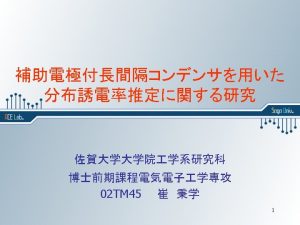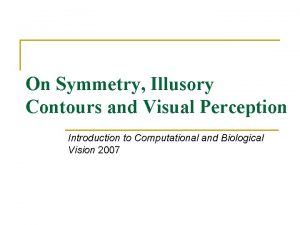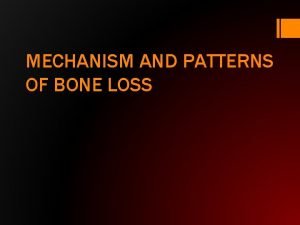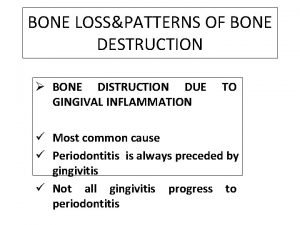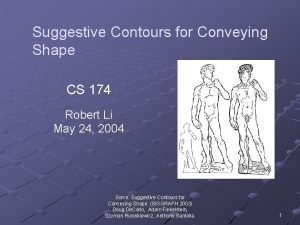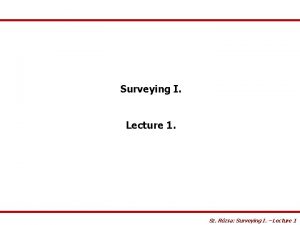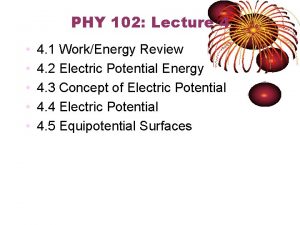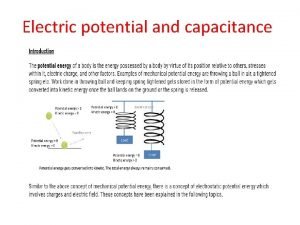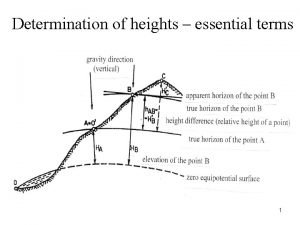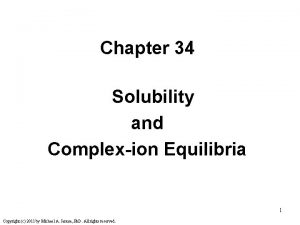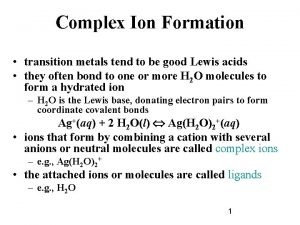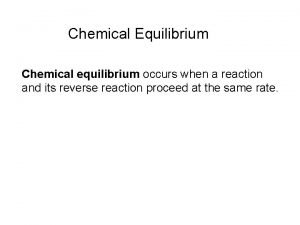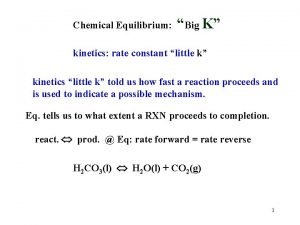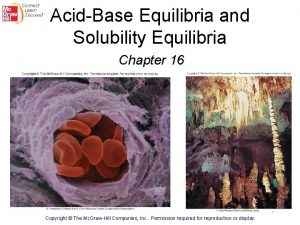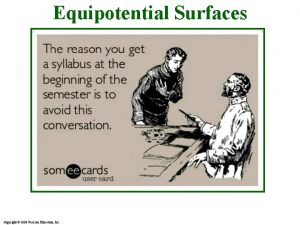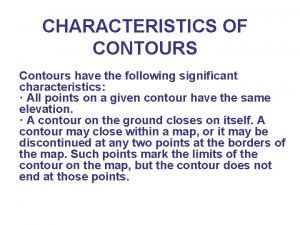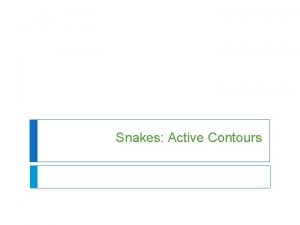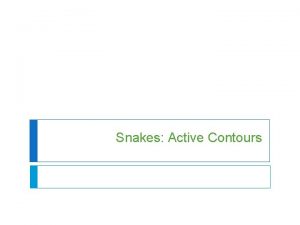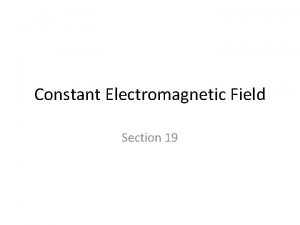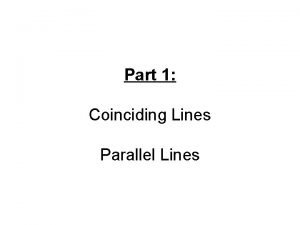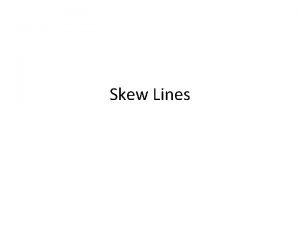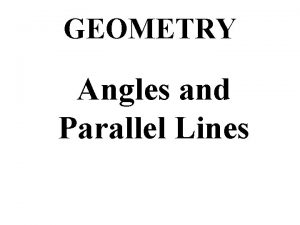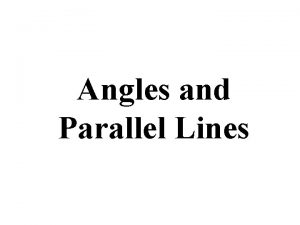Equipotential Lines Contours of constant V E field

































- Slides: 33

Equipotential Lines = Contours of constant V E field points downhill Downhill is always perpendicular to level Conductors at rest are equipotential

Electric potential is a scalar. Electric fields are vectors. BOTH follow principle of superposition… with multiple sources you can add the (field, potential) from each source.

Rank the magnitudes (smallest to largest) of the electric field at point P in the three arrangements shown. A] all are the same B] I, III C] III, I D] II, I, III Rank the electric potentials at point P (smallest to largest).

Where is on the x axis is the potential = 0? (other than at infinity) Take V = 0 at infinity. Or choose E: potential is zero nowhere except infinity. Ans. E

Where is on the x axis is the E field = 0? (other than at infinity) Or choose E: field is zero nowhere except infinity. Ans. C ratio of distances = 2: 1

Where is on the x axis is the potential = 0? (other than at infinity) Take V = 0 at infinity. Or choose E: at more than one point shown. Ans. E (both A & B have V=0)

Where is on the x axis is the E field = 0? (other than at infinity) Or choose E: off the left edge of the slide Ans E. 15 units to the left of the -1 charge, the ratio of distances is 2: 1

Potential from an infinite plane Potential from an infinite line (From infinite sources, we can’t take V=0 at infinity. But we are only ever interested in potential differences, so it doesn’t really matter. )

E (none) Which graph shows the potential from an infinite line of negative charge density, where x = distance from line?

What if you have two sources, say an infinite line and a point charge? In that case, there is no “zero convention”… no preferred place where we can all agree to make V=0. So it no longer makes any sense to speak of THE potential at a point. We can still find the potential difference between two points, however.

What is the potential difference between a point a distance r to the left of the point charge, and a point immediately below the point charge on the plane? Recall that the field from an infinite plane is E=

finding E from V If V = -4 x + 4 y 2 (x, y in meters, V in volts) , what is the E field at the origin? A] 0 B] 4 V/m in the +y direction C] 4 V/m in the -y direction D] 4 V/m in the +x direction E] 4 V/m in the -x direction

If V = -4 x + 4 y 2 (x, y in meters, V in volts) , where is the E field = 0? A] at the origin B] at x=1, y=1 C] at x=1, y=-1 D] at both B and C E] nowhere.

Two conductors in proximity form a “capacitor”: they have a capacity to hold a charge Q (+Q on one and -Q on the other) with a voltage difference V. C=Q/V Note: Capacitance C is italicized. Coulomb C is not. Capacitance is a property of the geometry of the conductors (and depends on whethere is vacuum or material between them, as we will see later. ) This is because of linearity (superposition. ) If I double the source charges, I will double the field, and double the potential.

“Reservoir” analogy The charge on a capacitor (±Q) is like the water The potential is like the depth of the water The capacitance is like the area of the lake So Q=CV

If I put ± 2 microcoulombs of charge on the sphere and plate, there is a potential difference of 2 V. What is the capacitance? A] 0 B] Cannot determine, since not symmetric C] 1 microfarad = 10 -6 C/V D] 106 farads

If I put ± 2 microcoulombs of charge on the sphere and plate, there is a potential difference of 2 V. If I put ± 4 microcoulombs of charge on the sphere and plate, what will be the potential difference? A] 0 B] 2 V C] 4 V D] 8 V

To calculate the capacitance of a pair of conductors, put +Q on one and -Q on the other, and calculate the potential difference. (Sometimes we refer to the capacitance of an isolated conductor. In that case, we put charge Q on the conductor and ask what is the potential (compared to infinity. ) Let’s do a cylindrical capacitor example.

Parallel plate capacitor Two infinite parallel sheets carry charge densities ± What is the electric field at point 1?

Two infinite parallel sheets carry charge densities ± What is the electric field at point 2? The potential difference between the plates is d

Capacitors “in parallel” (= same potential across them. ) Ceq = C 1 + C 2 Capacitors “in series” (= same charge on each) 1/Ceq = 1/C 1 + 1/C 2

What happens to the potential difference if I keep the same Charge on the plates, but increase separation? A] V increases B] V decreases C] V is unchanged

V increases. Where does this energy come from? Answer: it takes work to move the plates apart.

Where is this energy stored? ? It is stored in the field between the plates. The field is the same, but the volume of space is bigger. The “energy density” is the same, but there is more energy. How much energy?

It is proposed to store solar energy by filling a water tank during the day, raising the water from ground level. (At night, the water drains turning a generator. ) A tank is 20 m high and has vertical sides. When half full, it stores 1 million Joules. How much energy will it store when full? A] 1 million Joules B] 2 million Joules C] 4 million Joules D] 20 million Joules

“Dielectric” = a fancy word for a real insulator. In real insulators, charges can move, but only very small distances… the electrons can shift a bit with respect to the nucleii, but they can’t hop from one nucleus to the next. What happens to the electric field in a capacitor if we add a dielectric material? Let’s sketch on the board, and then I’ll quiz you.

By superposition, the field in the dielectric is the sum of the original capacitor field, plus the field from the polarization surface charge. The total field is therefore A] bigger than the original capacitor field B] smaller than the original capacitor field C] the same as the original capacitor field

Answer: smaller than the original field. We can write that the new field is the original field, divided by K, the “dielectric constant” • What is the new potential across the capacitor? A] same as the old potential, without the dielectric B] bigger than the old potential, by a factor of K C] smaller than the old potential, by a factor of K

If I put a charge ±Q on a parallel plate capacitor and insert a dielectric, what happens to V? A] it increases B] it decreases C] it stays the same

If I put a charge ±Q on a parallel plate capacitor and insert a dielectric, what happens to V? The field in the dielectric is reduced by a factor of K. So the potential goes down. What happens to the potential energy? A] it goes up by a factor of K B] it goes up by a factor of K 2 C] it goes down by a factor of K D] it goes down by a factor of K 2 E] it stays the same.

If I put a charge ±Q on a parallel plate capacitor and insert a dielectric, what happens to V? What happens to the potential energy? It may be counterintuitive, but the potential energy goes down by a factor of K (not K 2). U=Q 2/(2 C); the capacitance goes up by a factor of K. (or U = CV 2/2 … the voltage drops by K, the capacitance increases by K) Note: the energy density for a given E field in a dielectric is The field goes down by a factor of K, but epsilon adds a factor of K.

If the potential energy goes down, where does the energy go? • The field pulls the dielectric into the capacitor, giving it kinetic energy. (Very small, here. ) • Application: Optical tweezers

With a fixed charge on the plates, the dielectric is pulled into the capacitor. The field and field energy go down. What happens if, instead, the capacitor is held at a fixed potential? The energy goes up! U = CV 2/2, and the capacitance goes up. But we cannot conclude that you must push the dielectric in (in fact, you don’t have to) … the extra energy comes from the battery.
 Shape of equipotential lines
Shape of equipotential lines Equipotential lines
Equipotential lines Gravitational potential isolines
Gravitational potential isolines Electric potential unit
Electric potential unit Equipotential lines
Equipotential lines Illusory contours definition
Illusory contours definition Russian intonation contours
Russian intonation contours Cardiomediastinal contours
Cardiomediastinal contours Ledge bone destruction
Ledge bone destruction Patterns of bone destruction
Patterns of bone destruction Suggestive contours
Suggestive contours Luminita vese
Luminita vese Can two equipotential surfaces intersect
Can two equipotential surfaces intersect Critical hydraulic gradient formula
Critical hydraulic gradient formula Equipotential surface
Equipotential surface Personal protective grounding
Personal protective grounding Point a
Point a Equipotential surface
Equipotential surface Equipotential surface
Equipotential surface Complex ion formation and solubility
Complex ion formation and solubility Constant pressure filtration
Constant pressure filtration Formation constant vs equilibrium constant
Formation constant vs equilibrium constant Pointer constant in c
Pointer constant in c Constant pointer and pointer to constant
Constant pointer and pointer to constant Equilibrium occurs when
Equilibrium occurs when Ideal gas conditions
Ideal gas conditions Constant pointer and pointer to constant
Constant pointer and pointer to constant Constant pointer and pointer to constant
Constant pointer and pointer to constant Big k vs little k chemistry
Big k vs little k chemistry Potassium lithium
Potassium lithium Constant pointer and pointer to constant
Constant pointer and pointer to constant Coulombs constant units
Coulombs constant units Q factor of capacitor
Q factor of capacitor Magnetic field
Magnetic field




